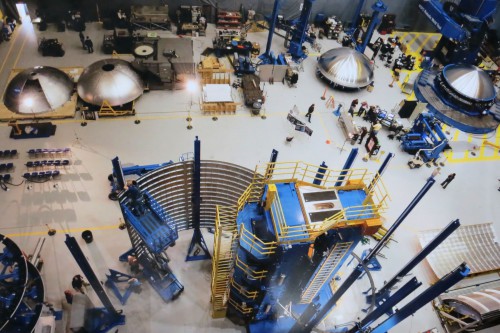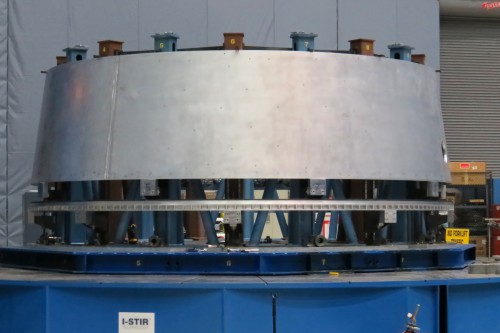
NASA’s engineers have been assembling the components for the flight test article that will fly on the Exploration Flight Test 1 (EFT-1) mission at NASA’s Marshall Space Flight Center (MSFC) in Huntsville, Ala. These elements will now be used to connect the Orion spacecraft to the United Launch Alliance Delta IV Heavy that will ferry this iteration of Orion to orbit.
EFT-1 will be used to validate the heat shield, avionics, and other flight systems that will be used on crewed versions of NASA’s newest spacecraft.
NASA plans to use Orion as well as the space agency’s new heavy-lift booster, the Space Launch System, or SLS, which is slated to conduct its first test flight in 2017.
“While the adapters are identical and are considered flight articles, only one will actually be used for EFT-1,” said Brent Gaddes, Spacecraft & Payload Integration Subsystem manager. “The other will undergo strenuous structural testing to ensure quality, while its twin will make the trip to NASA’s Kennedy Space Center in Florida for integration into the rest of the test vehicle for launch.”

The work is being conducted at the MSFC’s Building 4755, where welders have been using modern friction stir-welding techniques to assemble the conical interstage assembly. The process involves the vertical welding machine stitching panels together to produce this essential piece of flight hardware.
“You really don’t have the tools and the resources in one place anywhere else in the world,” said Justin Littell, a mechanical engineer with the welding group at the Marshall Center. “The work that we do here is exciting, and I get to work with a great team. It’s amazing.”
Various sections for the EFT-1 mission are starting to come together at NASA’s Kennedy Space Center in Florida. This spring, United Launch Alliance is scheduled to deliver the core segment of the Delta IV Heavy that will power the EFT-1 Orion to high-Earth orbit. Engineers there will test the fit of the interstage assembly with the rocket’s upper stage.
Portions of this article were made using a NASA article detailing the Interstage Assembly.



